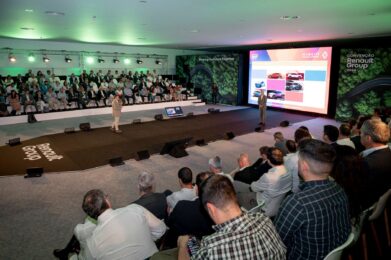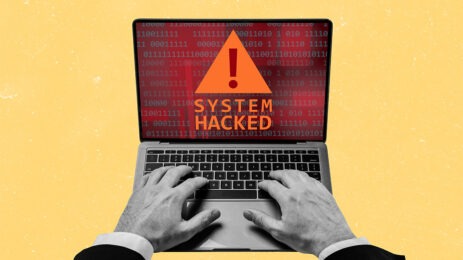Mastering virtualization
One of the most effective ways to learn is by doing—but watching others doing works, too. In this time of repackaging grand destination programs to fit onto computer screens, a great way to avoid mistakes is to study how our peers are shape-shifting. Smart Meetings asked three meeting planners how they kept everyone tuned in.
Here are their lessons learned.
A Job for a Professional
Some 250 leaders from Veritas Technologies meet yearly to coalesce around a plan for the upcoming 12 months. The 2020 Sales Leadership Summit was planned for April at Encore Boston Harbor Resort. “That was obviously not possible,” said Jenn Artura, head of global events, incentives and strategic programs. Nor was postponing for six months because the sales team needed the tools.
The biggest challenge? “This is normally an energetic, fun event,” Artura said. “We needed to keep the energy, but we had to change the tone in light of what was going on in the world.” A new theme— “Together We Will Win”—con-
veyed unity, community and transparency.
Without a stage, lighting and applause, the format also needed to change. Gone was the long keynote; in were TED-style presentations. The team chose Intrado as the platform and engaged the audience with Q&A sessions, comment feeds and an emcee.
Artura spread the agenda over three mornings with different sub-themes. Presentations were live to make them feel, well, alive. Quirky, unexpected moments like a prerecorded deejay during the 25-minute breaks led to lots of people posting videos of their entire family dancing.
Giving back is a company tradition that fosters connection. Three nonprofits were picked and the pump primed with $2,500 and a match. More than $55,000 was raised.
📍 Smart Tip: Hire a producer. “I woke up in the middle of the night and realized we needed one, so I got a pro,” she said. “Don’t do this alone.”
Eighty-five percent of participants ranked the shorter keynotes excellent and engaging. Better, they said they knew the plan to move ahead.
Meeting Expectations
When your event is for “digital transformation,” a switch to virtual can’t be half baked. Software company PTC’s annual LiveWorx was planned for mid-June at Boston Convention & Exhibit Center. Its aim was also to top last year’s event, which shut down a city block and brought in cast members from Game of Thrones. This year, country star Keith Urban was scheduled to thrill the crowd.
In March, the decision was made to go virtual.
“This is all an experiment. We are flying the plane and building it at the same time,” said Sarah North, LiveWorx senior event operations and logistics project manager.
The four-day agenda was slimmed to a day of prerecorded and live engagements, along with a networking lounge using TurnoutNow’s AI and hosted on Brightcove’s video cloud, which can handle large groups.
“Pack your bag” emails got people excited, icebreakers added fun to networking exercises and a virtual scavenger hunt on the mobile app gamified the experience and highlighted sponsors.
📍 Smart Tip: That plane turned out to be a metaphorical jet. By mid-May, 11,500 people had registered. “Executives began thinking we might have something,” North reported. The marketing team could see exactly what was resonating.
“It’s going to be okay. This is unknown territory for all of us, and we need to embrace this change,” North enthused.
Good Design Still Matters
A New Beginning World Conference approached Nifty Method Marketing & Events in April for help transforming an experience intended for 1,000 people in Los Angeles to a three-day virtual event. Oh, and it still wanted to charge attendees to come.
Organizers got pushback on keeping pricing the same, so they cut the cost in half, then added a premium for recordings of sessions.
Lindsay Martin-Bilbrey, CEO of Nifty Method, tweaked the agenda to fit Bizzabo and Zoom. The livestream was used for keynote sessions, and Zoom added interactivity during trainings.
A moderator interviewing speakers during breaks enticed people to stay at their laptops. Organizers paid to have coffee delivered to participants’ homes from local companies to preserve the reset feeling. An event app promoted even more interactivity during and after the conference.
What Martin-Bilbrey didn’t do was shrink speaker time. Keynotes were streamed for an hour, breakouts for 30 minutes. “If the conference was already about interactive experiences, you don’t always have to change the schedule that much,” she said.
📍 Smart Tip: “You can’t accept mediocre speakers,” she cautioned. If the content isn’t good, you will lose audience quickly. And there is no open bar to bring them back later.
Her advice? Practice. Even experienced speakers need to be trained on the equipment and taught to speak to a blank screen, where they can’t read the room. She sends a “studio in a box” and requires full run-throughs.
Visit SmartMeetings.com for Virtual Genius, a new resource area with everything you need to know to ace the next virtual and hybrid meeting.




